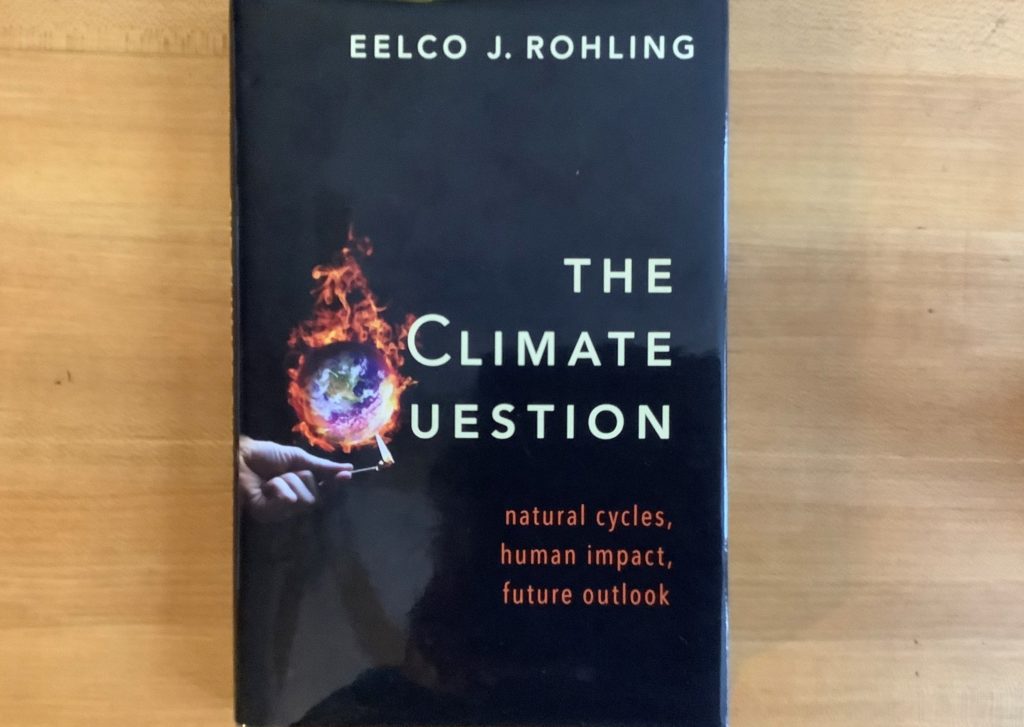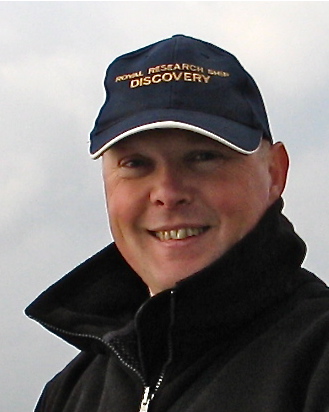Review of Eelco Rohling’s The Climate Question
The Climate Question: Natural Cycles, Human Impact, Future Outlook, 2019, Eelco Rohling, Oxford University Press, 162 p., reviewed by Tom Goreau, August 10, 2019
This slim volume is the best possible source for those who wish to understand how much humans and natural forces have changed the climate in the past and present, and what realistic options we have for nature-based solutions to prevent runaway climate change. Unlike other books about climate change, this one is firmly based in an understanding of the global carbon cycle and the changes it has undergone in the past.
The book is very tightly focused on the facts, and entirely avoids model predictions. Rohling, an oceanographer and geologist, has pioneered the use of long term climate records from ice caps, deep sea sediment cores, and corals to directly measure the sensitivity of global temperatures and sea levels to carbon dioxide, which are many times higher than IPCC projections that miss almost all of the long term climate response.These data show that the present atmospheric concentrations of over 400 parts per million of CO2 will lead to increases in temperatures and sea levels of around 17 degrees Celsius and 23 meters respectively, after a few thousand years’ time lag caused by deep ocean mixing, which will take hundreds of thousands of years to dissipate.
He shows that we are on a path to runaway global warming and ice cap melting which could result in up to 70 meters of global sea level rise — unless we remove excess CO2 rapidly from the atmosphere, much faster than nature can do it.
Rohling does not discuss geo-engineering, but firmly addresses the question of whether nature’s carbon cycle can take care of healing herself, showing that it is vastly too slow unless something actively and dramatically speeds it up (along with ending fossil fuel emissions). He offers hope in regenerative technologies (also known as Geotherapy) to greatly increase carbon stored in biomass and soils, and focuses in particular on use of rock powders to remineralize worn out soils and absorb CO2 from the air:
A much-voiced idea is to mine, grind, and then spread rock dust onto agricultural land. The rock dust, which can be from basalt-like rocks that are widespread around the world, also contain many nutrient-rich minerals. As chemical weathering occurs, it consumes CO2 and the nutrients are released into the soil. The weathered rock in addition causes the alkalinity of draining waters to increase, and this in turn causes increased CO2 invasion into the waters. Because of its nutrient release, the rock dust acts to fertilize the soil, which helps to increase crop yields and reduces the need for artificial fertilizers, although its important to keep rock dust/olivine doses within limits that avoid imbalances in plant nutrition. Overall, the soil gets enriched and holds more carbon, crop yields increase, and carbon is extracted from the atmosphere. Richer soils moreover retain water better than depleted soils, helping to alleviate the effects of occasional droughts, and/or reduce the need to tap into precious water resources for irrigation. Furthermore it seems that ground stability may be improved.
The crops produced with rock dust fertilization could be food or biomass for plants that would lead to further carbon extraction. Or the rock dust fertilization could be used in places for reforestation/afforestation, restoring natural ecosystems through soil restoration efforts and planting of native vegetation. Especially if wetlands are re-developed this way, even more carbon extraction and storage in those natural ecosystems will occur.
Biochar, which could greatly increase these benefits, is unfortunately not mentioned.
A drastic and urgent change in our carbon management is needed to avert looming catastrophe, and this book provides the best concise summary of the realistic options, solidly based in how climate change and the carbon cycle work in the real world. It is a quick read because it goes directly to the point and avoids any digressions into hypothetical models or unproven technologies. In this time of short attention spans, this book gives all the essential facts in as short a form as is both possible and necessary for understanding. It should be read by every policy maker whose actions, or lack thereof, affect our planet’s future.
Dr. Thomas J. F. Goreau, PhD is a Board Director of Remineralize the Earth (RTE); the President of the Global Coral Reef Alliance, a non-profit organization for coral reef protection and sustainable management; and Coordinator of the United Nations Commission on Sustainable Development Partnership in New Technologies for Small Island Developing States. He works with tropical fishing communities and organizations around the world to restore their coral reefs and fisheries. Dr. Goreau was the researcher for RTE’s New Harmony Farm CSA Research Project. He determined optimal ratios of rock dust, biochar and compost for use in agriculture, to create foods with high nutrient density and maximum carbon sequestration. He did a significant study on remineralization showing more than eight times the biomass for trees grown in Panama with basalt rock dust over a five-year period, and showing increases in major macro and micro-nutrients. He is the main editor and co-author of Geotherapy: Innovative Methods of Soil Fertility Restoration, Carbon Sequestration, and Reversing CO2 Increase, a technical book on remineralization and biochar, published in 2015 by CRC Press.
Support us on Patreon
Thank you for joining us today! Please become a member of RTE and support us on Patreon. Unlike many larger organizations, we work with a team of determined and passionate volunteers to get our message out. We aim to continue to increase the awareness of remineralization to initiate projects across the globe that remineralize soils, grow nutrient dense food, regenerate our forests’ and stabilize the climate – with your help! If you can, please support us on a monthly basis from just $2, rest assured that you are making a big impact every single month in support of our mission. Thank you!









Ronal W Larson
February 24, 2020 (12:07 am)
Sounds like a great book, but your concern on not mentioning biochar will probably keep me away. It would seem that macroalgae (sargassum, see grasses, giant kelp, etc should work for oceanic CDR.